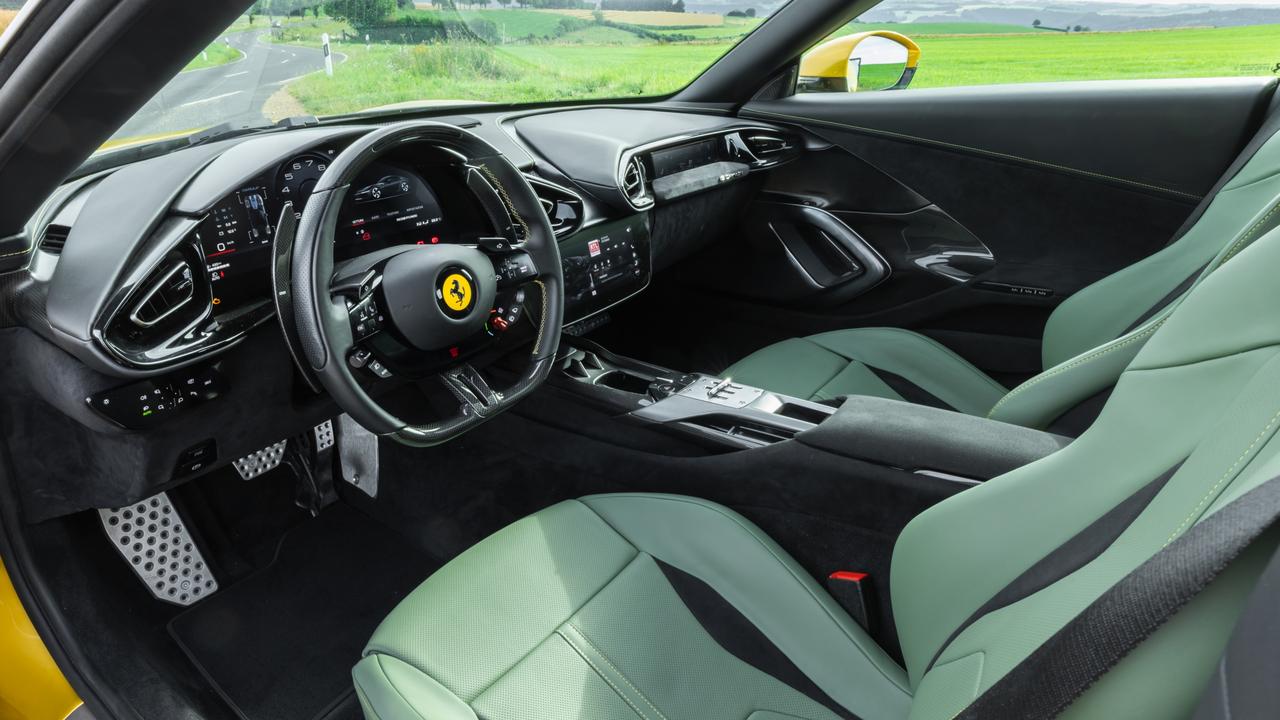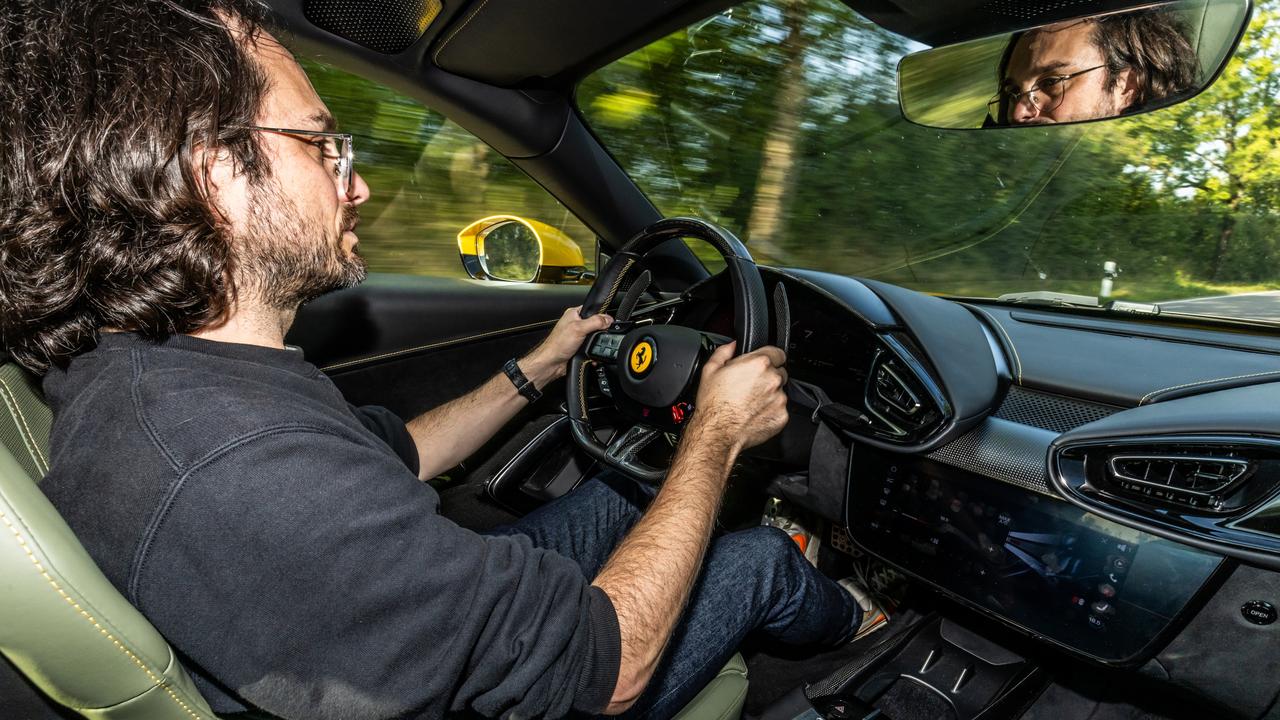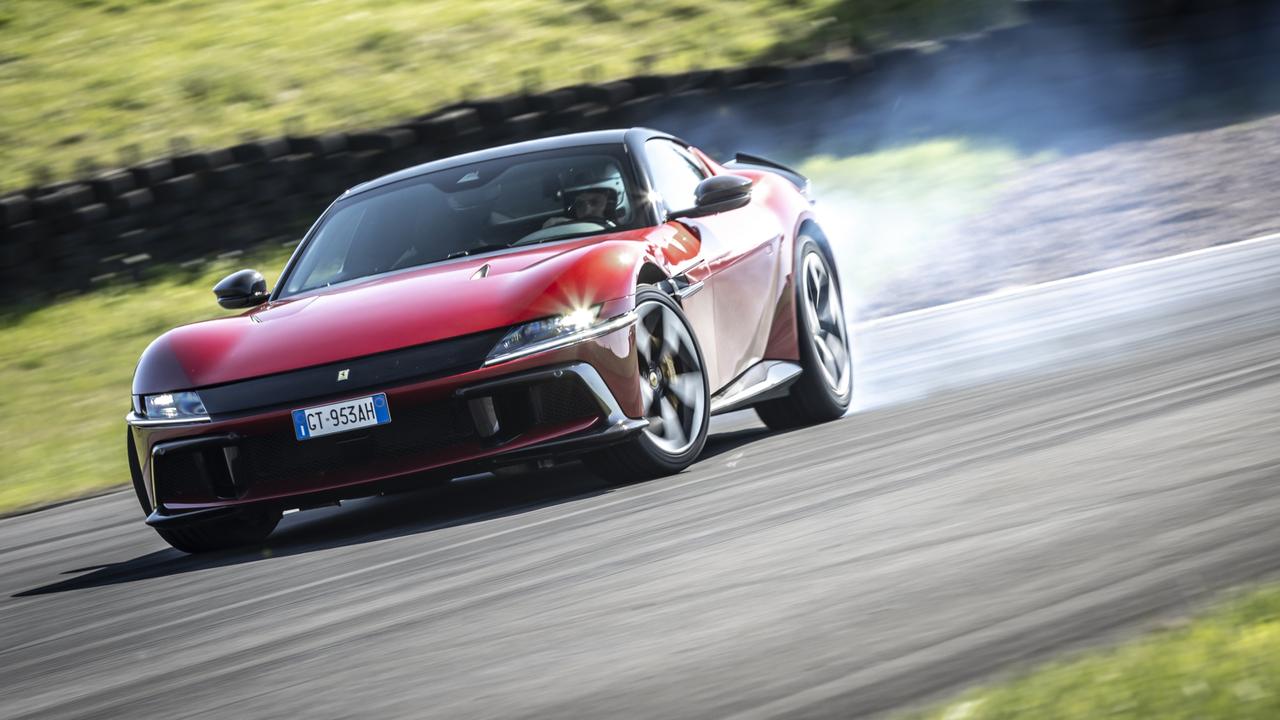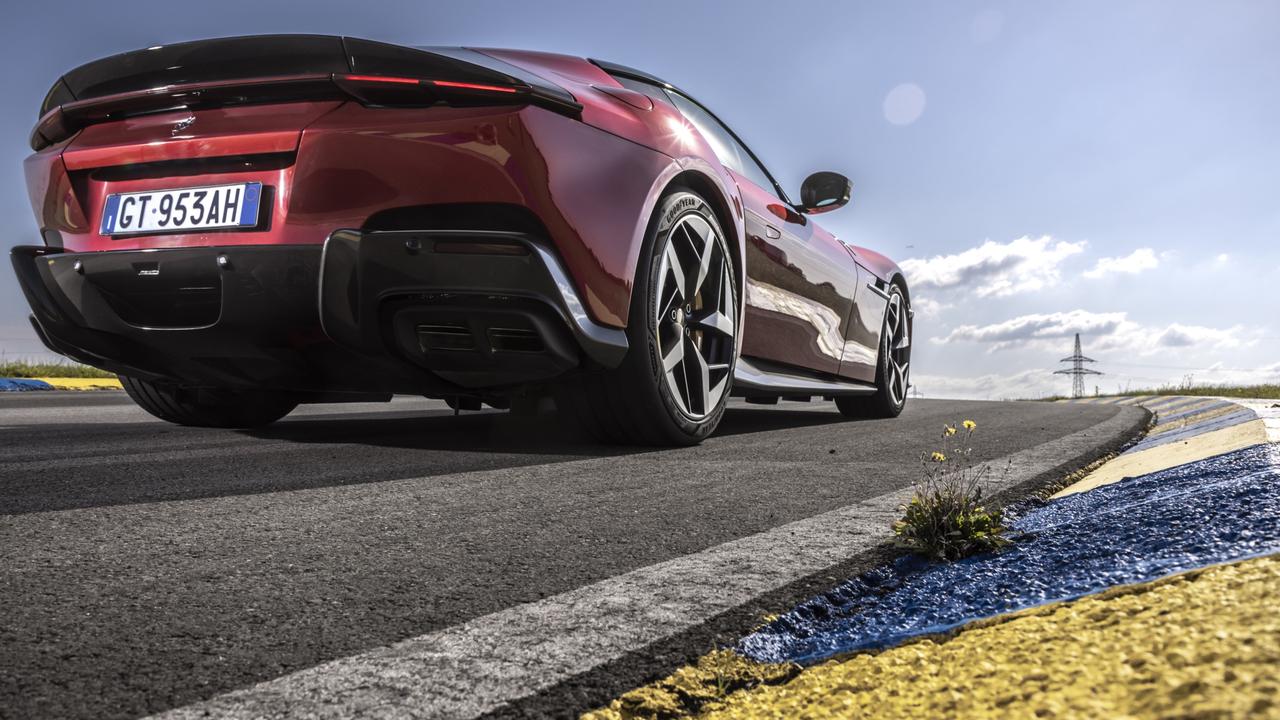2025 Ferrari 12Cilindri review
New V12-powered coupe could be last modern Ferrari to swerve around green engines for supercars.
Luxury
Don't miss out on the headlines from Luxury. Followed categories will be added to My News.
The most remarkable thing about the new Ferrari 12Cilindri is what it can’t do.
It can’t, for example, drive on pure-electric power alone.
Neither can it claw back energy under braking. Coast silently engine-off? Forget about it.

No, the most radical thing about Ferrari’s latest two-seat flagship is instead of a small electrified V6 it is powered by a large 6.5-litre V12 that doesn’t boast a single turbocharger.
The next shocking thing is Ferrari engineers could have made the 611kW 12Cilindri even quicker than its 2.9 second 0-100km/h, but didn’t, because it knows it would still be beaten off the lights by an anonymous four-door EV.
Instead, their focus was to maximise fun and to create a four-wheel homage to the glorious long line of Ferrari V12-powered GTs that came before it.
That explains looks that pay tribute to the past while looking forward with advanced active aerodynamics that include multiple underbody vortex generators and a pair of trick twin pop-up rear spoilers that produce 50kg of downforce at 250km/h.

Our favourite back catalogue reference, meanwhile, has to be the 1968 365 GTB/4 Daytona-inspired frontal styling that’s blended with the classic long-bonnet rear-drive proportions.
Inside, it much harder to warm to our test car’s green hide interiors.

We also hate the cheap-looking black piano trim but don’t mind the reusing of the dual-cockpit cabin design that was first introduced in the Ferrari Roma, our car also had a weird mixture of materials that include a natural-fibre composite replacement for carbon-fibre.
As well as featuring all the latest tech that include a huge 15.6-inch digital instrument cluster and relatively small 10.5-inch infotainment, plus the now obligatory third 8.8-inch display ahead of the passenger for the full co-pilot experience the evidence of a pair heated ventilated massage seats are the first telltales of a shift in focus.

The next is the lingering feeling they’ve ruined it when driving around town in Sport mode. The new Ferrari feels more like a limo beside the old Ferrari 812.
It’s quiet, comfortable and not even that quick.
While we’re focusing on the bad, we think the brakes are too sharp (and suffer squeal) and the steering is better on Porsches with similar rear-wheel steer.
But switch the handy wheel-mounted rotary manettino to Race and really work that big V12 and the Ferrari switches from disappointment to elation as you finally unearth the 12Cilindri’s wild side.
It’s only really from 7000-9500rpm does the 12Cilindri deliver an experience well-worthy of its near seven-figure price tag. From its howling soundtrack to weapons-grade punch – it’s intoxicating, highly addictive and manages to conjure up unrepeatable velocities that make you question its relevance Down Under with our much lower road speeds.

Luckily, the new eight-speed dual-clutch transmission borrowed from the Ferrari SF90 can do both slow and fast, capable of both the smoothest upshifts and the most violent downshifts this side of a Le Mans winning racer.
When it arrives in Australia in the second half of 2025, Ferrari says the 12Cilindri will be priced from $803,500 for the Coupe and $886,800 for the roofless Spider that will arrive around three months later and might not need the aftermarket sports exhaust the tin top version is crying out for.

Both are priced a cool $100,000 more than the 812 Superfast it replaces.
Which means after on-roads and the average six-figure sum most pay for personalisation you’ll be nudging a cool million for it.
Instead of snaring new youthful buyers, Ferrari thinks its latest creation will attract the old guard who already have at least one V12 in their collection.
Perhaps that explains the extra layer of sophistication and refinement that’s been added, but you just can’t help feel sorry for all those much-younger new breed of millionaires currently snapping up hybrid-powered supercars.
They’ll never know what they’re missing.
Originally published as 2025 Ferrari 12Cilindri review








